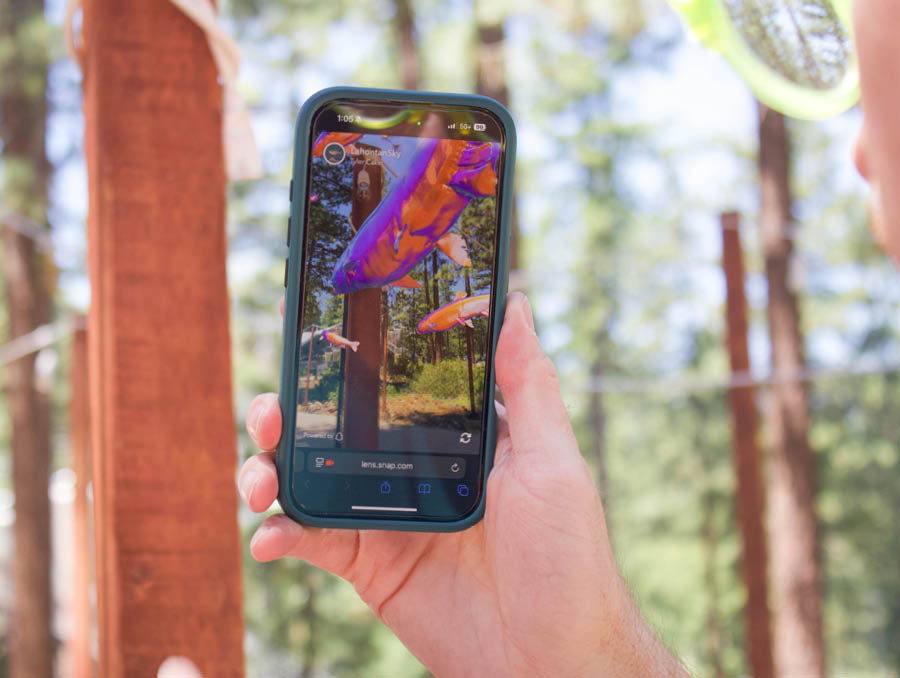Exploring Lake Tahoe’s Ecology through Art and Science at the University of Nevada, Reno

Investigating Lake Tahoe’s Ecology with Interdisciplinary Collaboration
Lake Tahoe, renowned for its stunning clarity and expansive waters, is an ecological jewel situated within the Sierra Nevada. The University of Nevada, Reno at Lake Tahoe has taken significant strides in advancing understanding of this fragile environment by integrating scientific research with artistic expression. The recent Watershed exhibit, a collaborative project hosted at the Tahoe Gallery, exemplifies this interdisciplinary approach, engaging artists, scientists, and the community in a dialogue about the lake’s health, conservation, and the complex ecosystems it supports.
The Role of the University of Nevada in Lake Tahoe Ecology
The University of Nevada, Reno’s involvement in Lake Tahoe conservation emphasizes both scientific research and public outreach. Faculty like Sudeep Chandra from the Tahoe Institute for Global Sustainability conduct vital research into biodiversity, water quality, and ecological impacts of climate change. These efforts inform policy and help craft sustainable management strategies to preserve the lake’s unique environment.
Through initiatives like the Tahoe Co-Lab and exhibitions such as Watershed, the university promotes a holistic understanding of ecological processes. This innovative collaboration model encourages creative interpretations of scientific data, making complex environmental issues accessible and engaging to diverse audiences.
Understanding Lake Tahoe’s Ecology: Key Topics and Challenges
1. Water Clarity and Quality
One of Lake Tahoe’s defining features is its exceptional clarity, which has been impacted by increased algae growth, sedimentation, and wildfire-related debris. Scientific studies monitor these changes, aiming to identify causes and develop mitigation strategies. The Watershed exhibit incorporates immersive visualizations and sound recordings from the lake, illustrating these environmental transformations.
2. Biodiversity and Endangered Species
Lake Tahoe supports endemic species, such as the Lahontan cutthroat trout, which are now dwindling due to warming waters and habitat disturbances. Researchers and artists collaborated using underwater cameras and hydrophones to visualize and sonify these delicate habitats, raising awareness of conservation needs.
3. Wildfire and Climate Impacts
Recent wildfires have profoundly affected the ecosystem, altering runoff patterns and introducing smoke into the atmosphere. The Watershed project explores these impacts through art installations that depict the interplay between fire, climate change, and aquatic health, prompting viewers to consider their role in ecological resilience.
Innovative Art Practices Illuminating Ecological Data
The exhibition’s use of immersive technologies exemplifies how art can serve as a conduit for ecological understanding. Notable features include:
- Virtual Reality Installations: Viewers are submerged into the lake’s depths via VR headsets, experiencing the underwater forests and habitats firsthand.
- Soundscapes: Hydrophone recordings capture the lake’s acoustics, revealing the vibrancy and disturbances within its ecosystems.
- Interactive Visuals: Video displays and digital interactives visualize water quality metrics such as algae levels and clarity, connecting data to tangible visualizations.
These approaches foster an emotional and intellectual connection to Lake Tahoe’s ecological realities, encouraging public engagement and stewardship.
Implications for Conservation and Policy
Blending art and science not only enhances public awareness but also influences policy decisions aimed at protecting Lake Tahoe. The interdisciplinary dialogue helps stakeholders visualize ecological shifts and understand the importance of sustainable practices, such as limiting development runoff, managing wildfire risks, and restoring native habitats.
Initiatives like the Tahoe Institute for Global Sustainability leverage this collaborative model to inform policy and foster community participation in conservation efforts. The empower stakeholders—from local residents to policymakers—to envision and implement effective solutions for the lake’s future.
How Community Members Can Engage with Lake Tahoe’s Ecology
Public participation is vital to the conservation of Lake Tahoe. Visitors and residents can:
- Attend exhibitions like Watershed at the Tahoe Gallery to experience ecological data through artistic media.
- Participate in citizen science programs monitoring water quality and wildlife health.
- Support policies aimed at reducing pollution, managing wildfire risks, and restoring native ecosystems.
- Promote awareness through education and community-led projects that celebrate Lake Tahoe’s natural beauty and ecological importance.
Looking Ahead: The Future of Lake Tahoe Conservation
The integration of artistic endeavors with scientific research exemplified by the Watershed exhibit represents a promising path forward. Continued interdisciplinary collaborations can foster greater public engagement, enhance environmental literacy, and inspire innovative solutions to ecological challenges. The University of Nevada, Reno’s leadership in this realm underscores the importance of a comprehensive approach to preserving natural landscapes like Lake Tahoe.
To learn more about ongoing conservation initiatives and upcoming exhibitions, visit the University of Nevada, Reno Lake Tahoe programs. Engage with the local community and contribute to safeguarding this treasured ecological resource for generations to come.

